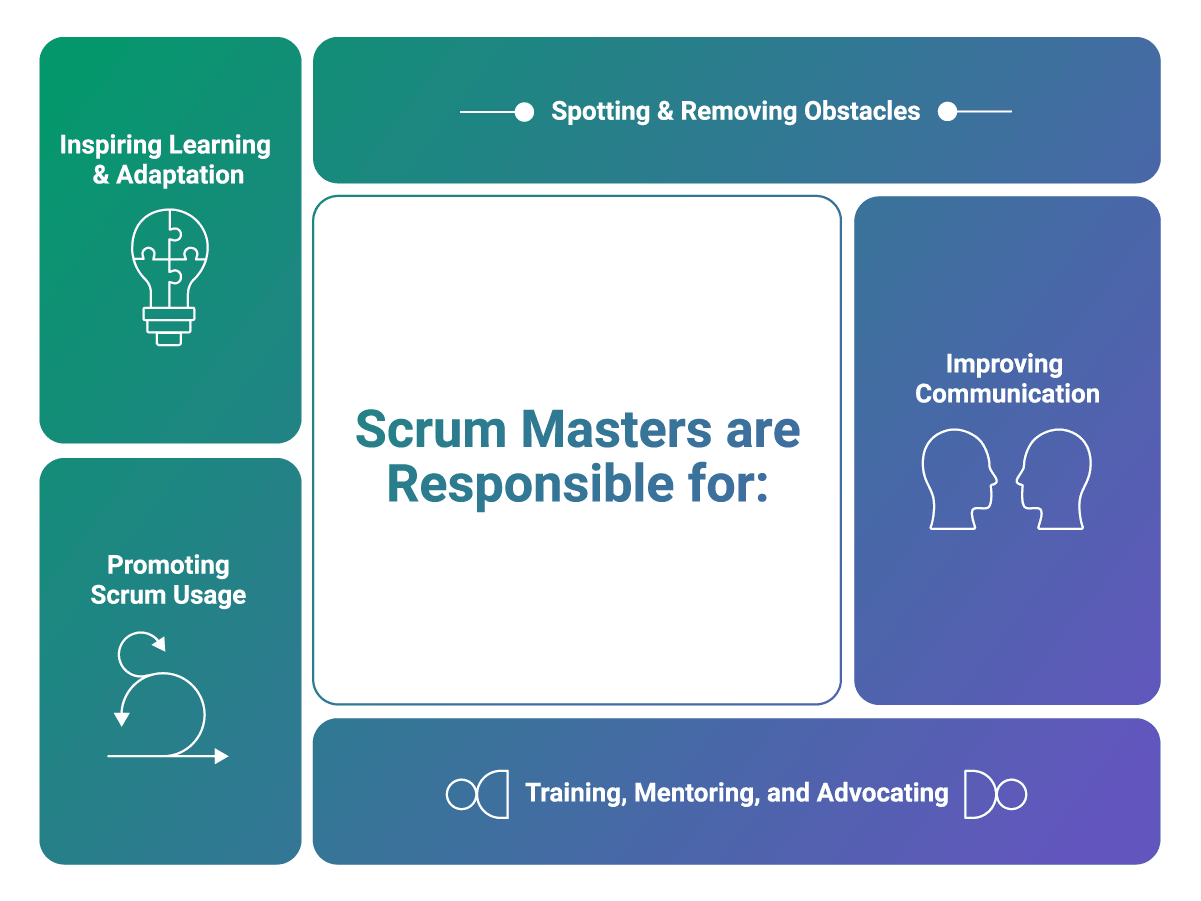Are your software projects consistently running over budget, missing deadlines, or failing to meet stakeholder expectations? You're not alone. According to the Standish Group's CHAOS Report, only 31% of software projects are considered successful. The culprit? Often, it's the wrong project management approach for your team's specific needs—a challenge that affects everything from custom software development to complex enterprise integrations.
If you're exploring Agile methodologies to solve these challenges, you've likely encountered Scrum as the most popular framework. But here's the critical question: Is Scrum actually the right choice for your team, or would another Agile approach serve you better?
In this comprehensive guide, we'll break down the key differences between Agile as a philosophy and Scrum as a specific framework, help you understand when Scrum excels versus other methodologies, and provide a practical decision framework based on insights from Christina Lukynyuk, Softjourn's certified Scrum Master with over four years of hands-on experience managing distributed teams across multiple time zones.
Understanding Agile: The Foundation for Modern Software Development
Before diving into Scrum specifics, let's establish what we mean by "Agile." Many teams use these terms interchangeably, but understanding the distinction is crucial for making the right methodology choice.
What Is Agile Methodology?
Agile is a philosophy and set of principles for software development that emphasizes:
- Individuals and interactions over processes and tools
- Working software over comprehensive documentation
- Customer collaboration over contract negotiation
- Responding to change over following a plan
These four values, outlined in the Agile Manifesto, form the foundation for various frameworks and practices. Agile isn't a specific process—it's a mindset that prioritizes flexibility, collaboration, and continuous improvement.
Popular Agile Frameworks: Your Options Beyond Scrum
While Scrum dominates the conversation (used by 66% of Agile teams according to the 14th Annual State of Agile Report), several other frameworks deserve consideration:
Kanban: Focuses on visualizing workflow and limiting work in progress. Ideal for teams with unpredictable workloads or continuous delivery requirements.
Extreme Programming (XP): Emphasizes technical practices like pair programming, test-driven development, and continuous integration. Best for teams prioritizing code quality and technical excellence.
Scaled Agile Framework (SAFe): Designed for large organizations needing to coordinate multiple Agile teams. Suitable for enterprise environments with complex dependencies.
Lean Development: Derived from manufacturing principles, focusing on eliminating waste and maximizing value delivery. Effective for startups and resource-constrained teams.
Crystal: A family of methodologies tailored to team size and project criticality. Offers flexibility for teams that need customized approaches.

Scrum Deep Dive: When This Framework Shines
Now that we've established the broader Agile landscape, let's explore Scrum in detail and understand why it has become the go-to choice for so many development teams.
What Makes Scrum Unique?
Scrum is a lightweight framework that enables teams to work on complex problems through iterative and incremental delivery. Unlike other Agile approaches, Scrum provides specific roles, events, and artifacts that create structure while maintaining flexibility.
The three pillars of Scrum:
- Transparency: Everyone involved has visibility into the process and work being done
- Inspection: Teams regularly examine artifacts and progress toward goals
- Adaptation: Teams adjust their approach based on learnings and feedback
.png)
The Scrum Framework in Action
Scrum operates through clearly defined roles, events, and artifacts that work together to create a productive development cycle:
Core Roles
Product Owner: Defines and prioritizes the product backlog, representing stakeholder interests and ensuring the team builds the right features. They create a prioritized "wishlist" of tasks and requirements that guide development efforts.
Scrum Master: Facilitates the Scrum process, removes obstacles, and helps the team follow Scrum principles. As Christina Lukynyuk explains, "It's my job to advocate for my team so they don't get too stressed—otherwise errors can occur. The team must work at a sustainable pace that they set for themselves."
Development Team: Cross-functional group of 3-9 professionals who design, build, and test the product. Unlike traditional project management, team members are collectively responsible for all work within a sprint.
Key Events (Ceremonies)
Sprint Planning: Teams collaborate to select items from the product backlog and create a sprint backlog with specific, achievable goals for the upcoming iteration (typically 1-4 weeks).
Daily Standups: Brief 15-minute meetings where team members share progress, plans, and any blockers. This maintains transparency and enables quick problem-solving.
Sprint Review: Stakeholders and the product owner examine completed work and provide feedback, ensuring the team is building the right solution.
Sprint Retrospective: The team reflects on their process, identifying what worked well and what could be improved. This continuous improvement mindset is essential for long-term success.
Why Teams Choose Scrum: The Compelling Advantages
Based on Softjourn's experience working with diverse clients, Scrum offers several distinct advantages:
Accelerated delivery: Teams complete project deliverables quickly and efficiently because work happens simultaneously rather than sequentially. Users see working software every 1-4 weeks instead of waiting months for a complete product.
Enhanced productivity: Short sprints with clear goals create focused work periods that maximize time and resource efficiency. Teams report higher engagement when they can see tangible progress regularly.
Improved transparency: Daily standups and sprint reviews give stakeholders unprecedented visibility into project progress. As Christina notes, "Our team and our client's team are in different time zones, so it's helpful to have a Scrum Master to ensure transparency on what's happening in the team."
Built-in quality assurance: Each sprint includes development, testing, and demo phases, catching issues early when they're less expensive to fix. This approach aligns well with comprehensive QA and testing practices that ensure product reliability.
Flexibility for change: The iterative nature allows teams to incorporate stakeholder feedback and changing requirements without derailing the entire project.
Better team dynamics: The collaborative approach and shared accountability create stronger working relationships and higher job satisfaction.
How is the Scrum Framework Applied?
There are three main roles that surmise the major pieces of Scrum – the Product Owner, the Scrum Team, and the Scrum Master. Together, they follow this cycle:
- The product owner creates a product backlog which serves as a ‘wishlist’ of tasks that should be prioritized in a project
- A certified Scrum Master sets up the Scrum process, guides the team, and keeps them focused, motivated, and well connected with the product owner
- The Scrum team conducts sprint planning sessions where they break down the product backlog into smaller and more manageable tasks
- The team creates a sprint backlog and plans its implementation
- The team decides on a time duration for each sprint, commonly two weeks
- The team gets together every day for a brief daily Standup, where each team member shares their progress and updates, allowing the Scrum master (and sometimes project manager) to assess how the team is doing and if there are any obstacles in their way
- The stakeholders and the product owner conduct a review at the end of each sprint with feedback for team
- The Scrum master holds a retrospective meeting each week with the team to discuss what went well and what could be improved
- The feedback from the product review and the retrospective meeting is applied and changes are made when needed. You could also utilize anonymous employee survey tools upon completion of a project to ascertain what the team really thought of the process - and make adjustments as necessary for your next Scrum cycle.
.png)
What does a Scrum Master do?
The Scrum master is the figurehead of the Scrum team who is responsible for championing a project, setting up the Scrum process, providing guidance and motivation to team members and the product owner, and ensuring that scrum values and practices are followed by the team.
Since Scrum masters are at the nexus between the product owner and teams, a Scrum master’s responsibilities differ based on the unique needs of each individual and on the goals of a project.
Here is a brief rundown of the five chief things that Scrum Masters are responsible for:
- Spotting & Removing Obstacles - There will always be blockers during any project, so it’s the job of a Scrum Master to work hard to identify them and help the team resolve issues that prevent progress.
- Improving Scrum Usage - A great Scrum Master observes how their team applies the values that are important to Scrum and determines if they need improvement. If a member is struggling with a certain skill, the Scrum Master will point out what needs to be improved to strengthen the process. By doing this, the Scrum Master will be assured that members of the team recognize where they need to grow and learn valuable lessons so they can work better together.
- Training, Mentoring, and Advocating - It is essential for the team to learn about the Scrum process and how to improve working as a team. It is the Scrum Masters' job to help team members develop better organizational skills. Additionally, some Scrum masters find it important to advocate for their team members, especially in meetings with senior-level professionals or the product owner.
- Inspiring Learning and Adaptation - A good Scrum Master uses challenges and places of improvement as learning experiences for their team, which helps the team grow stronger and enhances the quality of their work.
- Improving Communication - A successful Scrum team is one that communicates well. Scrum Masters strive to make Scrum meetings more efficient and effective, helping team members to focus on collaboration and think retrospectively about their work. The results of the meetings should be small, actionable, and assignable. However, a Scrum master does not necessarily have to facilitate all meetings.

Can You do Scrum Without a Scrum Master?
Some people may say that a Scrum Master is unnecessary because their team is already aware of how to do Scrum and is organized enough. However, their Scrum process will likely suffer more than they realize without a great Scrum master.
At the business level, the Scrum master creates a development environment that is productive, safe, highly collaborative, and supportive. While these ideals may not seem necessary at first glance, they build team satisfaction which is extremely important to prevent burnout. An over-stressed and disorganized team can create expensive and embarrassing errors on the client side, and unhappy developers who will likely seek greener pastures.
At the product owner level, the Scrum Master helps facilitate planning and helps the product owners understand and adhere to Scrum practices. Our Scrum Master makes sure the product owner knows exactly what the team will deliver at the end of the sprint and the status of the tasks at any time. This way the product owner can plan for the work ahead using the metrics, timeline, and data set by the Scrum Master.
At the team level, the Scrum Master provides guidance, coaching, support, and some facilitation, while helping the team as a whole learn how to identify and remove any obstacles they may encounter along the way. Without a Scrum Master, the Scrum Team will have a hard time becoming the best version of itself.
Finally, at the individual level, the Scrum master supports team members to set smart and realistic goals, address issues that are preventing their progress, strengthen their skill sets, and develop effective and productive communication with their team.
In summary, a Scrum Master can be a huge factor in the overall quality of a product, the relationship with a client or product owner, and how well a team follows and benefits from Scrum.
What’s the Difference Between a Scrum Master and a Project Manager?
We commonly hear the question of how a Scrum Master differs from a Project Manager. While there are some similarities between the two roles, overall they are quite different from each other, especially in the amount of involvement in the project.
| Scrum Master | Project Manager |
|---|---|
| For projects using agile methodologies, a Scrum master is a key role. They will take on the role of a facilitator and coach for agile development teams in ensuring products are delivered on time with the quality specified. | For most types of projects, a project manager takes the lead role in all phases and activities of a project, such as planning, leading, managing, monitoring, and closing. |
| Support product owners throughout product development. | Determine, document, and manage the scope of a project, requirements, progress, tasks, milestones, timelines, budget, and resources. |
| Lead Scrum meetings and provide team support during sprint planning and execution. They do not necessarily facilitate all team meetings. | Manage project timelines and meetings. |
| Assist teams with prioritizing and managing of sprint backlog; never assigns tasks | Determines and assigns tasks and priorities, as well as allocating, monitoring, and managing project resources. |
| Train and Mentor the Team to become self-sufficient | Lead and mentor project teams. |
| Help teams identify and deal with any barriers to successful delivery | Develop strategies for managing risks, as well as risk tracking. |
| Advocate on the team’s behalf to stakeholders and product owners | Manage stakeholders and communicate to them the task, milestone, and project progress and any changes made to it. |
| A job well done is a self-managing team that follows the Scrum principles. | A job well done is when the project goals are met, and the project and activities have been closed out. |
There can be both a Project Manager and a Scrum Master on a Scrum team, one, or none - it just depends on the needs of the project and the team.
Scrum masters are recommended for the start of projects, especially for working with mature teams that can organize processes by themselves and don’t want too much management but need a leader.
On the other hand, young teams usually need a project manager to tell them how to come to a solution and whether the project goals are met.
What are the Benefits of Using Scrum?
- Scrum helps teams complete project deliverables quickly and efficiently because work is done by the development team simultaneously rather than sequentially
- Scrum ensures productivity meaning an effective use of time and money
- Large projects are divided into easily manageable sprints
- Developments are coded and tested in a demo during each sprint review
- The team provides more transparency to each other and the product owner giving clearer project insights
- Scrum, being agile with short sprints, is flexible and uses feedback from customers and stakeholders
- The individual effort of each team member is visible during daily scrum meetings which can create better employee engagement and higher team morale
- Retrospective meetings help the team improve
Disadvantages of Scrum
Like every framework, Scrum also has some disadvantages to keep in mind when selecting how to organize your project.
- Since there are often no definitive end-dates for tasks, Scrum can lead to scope creep
- If the individuals aren't very committed, communicative, or collaborative, the project can fail
- The framework works better with experienced team members, so junior-level teams may need a more hands-on approach
- Daily meetings sometimes frustrate team members
- If a team member leaves in the middle of a project, it can have a negative impact on the project
- Newcomers to a project need onboarding for the project and the Scrum principles
- Quality is hard to implement until the team goes through an aggressive testing process
Proper planning and smart decision-making can help you get past these challenges of Scrum methodology. The best way to do these things is with an effective and experienced Scrum Master who can help the team avoid pitfalls and support the process.
Is Scrum the Right Framework for My Project?
When considering if Scrum might be the right project management framework for your development, keep in mind what type of goals you have for your project, the size and location of your teams, and what your users expect from the product.
Scrum may be well-suited if you want:
- A quick and high-quality release of usable products to users and customers
- Fast-moving development of your product (especially for complex projects on a time crunch!)
- Boosted team productivity and morale
- Greater flexibility to incorporate changes as they occur
- To prioritize the release of some parts earlier than others (Users can see usable portions of completed product quicker and report back their findings)
- Constant project and team improvement
- Teams to work well together even on different timezones
The Honest Assessment: When Scrum Isn't the Answer
While Scrum offers compelling benefits, it's not a universal solution. Understanding its limitations helps you make an informed decision.
Scrum's Challenges and Limitations
Scope creep vulnerability: Without definitive end dates for features, projects can expand beyond original boundaries if not carefully managed.
Team maturity requirements: Scrum works best with experienced, self-organizing teams. Junior developers may struggle without more prescriptive guidance.
Cultural fit concerns: Success requires high levels of collaboration, communication, and commitment. Teams accustomed to traditional hierarchies may face adoption challenges.
Meeting fatigue: Some team members find daily standups and frequent ceremonies disruptive, especially in the early adoption phase.
Difficult metrics: As Christina observes, "It can be difficult to measure some values of Scrum. Like how can you really measure transparency or communication? You need an experienced Scrum Master to analyze and capture this."
Impact of team changes: When team members leave mid-project, it can significantly disrupt sprint goals and team dynamics.
When Other Agile Frameworks Might Serve You Better
Choose Kanban instead if you have:
- Unpredictable work requests (like DevOps or support teams)
- Continuous delivery requirements
- Established processes that work well
- Resistance to ceremony and meetings
Consider XP if you prioritize:
- Technical excellence and code quality
- Pair programming and collective code ownership
- Continuous integration and deployment through DevOps practices
- Working with rapidly changing requirements
Explore SAFe for:
- Large organizations with multiple teams
- Complex product portfolios
- Regulatory compliance requirements
- Need for strategic alignment across departments
Decision Framework: Choosing the Right Methodology for Your Team
Making the right choice requires honest assessment of your team, project, and organizational context. Use this framework to guide your decision:
Scrum Is Likely Your Best Choice When You Want:
✅ Rapid, iterative delivery of working software to users and stakeholders
✅ High stakeholder engagement with regular feedback and course correction opportunities
✅ Improved team collaboration and shared accountability for outcomes
✅ Flexibility to adapt to changing requirements and market conditions
✅ Clear project visibility with regular demonstrations of progress
✅ Teams working across time zones with structured communication protocols
Consider Alternatives to Scrum If You:
❌ Have a fixed scope with minimal expected changes
❌ Work in highly regulated environments with extensive documentation requirements
❌ Manage large teams (more than 9 people) without ability to split into smaller groups
❌ Handle unpredictable, interrupt-driven work like technical support or DevOps
❌ Have junior-heavy teams needing more prescriptive guidance
❌ Face organizational resistance to ceremony and collaboration requirements
The Hybrid Approach: Best of Both Worlds
Christina Lukynyuk emphasizes that frameworks aren't mutually exclusive: "Scrum doesn't work for every project, team, or technical professional. However, Kanban, Scrum, and other frameworks aren't mutually exclusive and can actually complement each other well."
Many successful teams combine elements from multiple frameworks:
- Scrum + Kanban (Scrumban): Use Scrum's structure with Kanban's flow management
- Scrum + XP: Combine Scrum's organization with XP's technical practices
- Scrum + Lean: Apply Scrum ceremonies while emphasizing waste elimination
Getting Started: Implementation Best Practices
If Scrum seems right for your team, success depends on thoughtful implementation. Here's how to set yourself up for success:
Phase 1: Foundation Building (Weeks 1-4)
Secure organizational buy-in: Ensure leadership understands Scrum requires cultural changes, not just process adoption. This is particularly important for digital transformation initiatives where methodology choice impacts entire organizational workflows.
Invest in training: All team members, including stakeholders, need Scrum education. Consider working with certified Scrum Masters who can provide expertise and mentorship.
Start small: Begin with a pilot team and project to learn without risking critical deliverables. Consider starting with a project discovery phase to better understand your team's readiness and project requirements.
Define your "Definition of Done": Establish clear criteria for when work is considered complete to prevent scope creep and quality issues.
Phase 2: Process Refinement (Weeks 5-12)
Focus on retrospectives: Use these meetings to continuously improve your process based on real experience.
Track key metrics: Monitor velocity, sprint goal completion rates, and team satisfaction to measure progress.
Adapt ceremonies to your context: Modify meeting formats and frequencies based on what works for your team and stakeholders.
Address resistance promptly: Some team members may struggle with the collaborative, transparent nature of Scrum. Provide additional support and coaching as needed.
Phase 3: Optimization and Scaling (Months 4+)
Develop team self-sufficiency: As Christina notes, "When a team has been taught to become self-sufficient on a project and manage the Scrum principles by themselves, that's when the Scrum Master can leave."
Scale thoughtfully: If expanding Scrum to additional teams, ensure each maintains the small, cross-functional structure that makes Scrum effective.
Integrate with existing systems: Connect Scrum practices with your existing tools for project management, code review, and stakeholder communication. For complex environments, consider how Scrum fits within your broader IT consulting strategy.
The Role of Expert Guidance
While Scrum appears straightforward, successful implementation often requires experienced guidance. Christina Lukynyuk's dual background as both a Scrum Master and Project Manager provides unique insights into when and how to apply Scrum effectively.
"A Scrum Master's work is rarely seen, but is shown by the quality of the work," Christina explains. "Sometimes Scrum Masters try to take on extra work to prove their value, but in reality, we are supposed to be observing the team, setting up the process, and helping teams become self-sufficient so they can manage themselves."
What an Experienced Scrum Master Brings to Your Team:
Process expertise: Understanding of how to adapt Scrum principles to your specific context and challenges
Obstacle removal: Proactive identification and resolution of blockers that could derail sprint goals
Stakeholder management: Facilitation of communication between development teams and business stakeholders
Team development: Coaching to help team members develop collaboration and self-organization skills
Metrics and insights: Ability to measure and communicate the value Scrum brings to your organization
Making Your Decision: Next Steps
Choosing between Agile frameworks isn't a one-time decision—it's an ongoing process of evaluation and adaptation. The key is starting with a clear understanding of your team's needs, constraints, and goals.
If you're considering Scrum for your development team, ask yourself:
- Do we have stakeholders who can actively participate in regular reviews and feedback sessions?
- Is our team prepared for the cultural shift toward collaboration and shared accountability?
- Can we commit to the ceremony and structure that makes Scrum effective?
- Do we have access to experienced Scrum Masters who can guide our implementation?
Remember, as Christina emphasizes, "A best practice is to use different pieces of frameworks, combine them, and tailor them to what works best for the team. Just like Scrum, consider your project management to be flexible so you can see what works, adapt, and improve your process over time."
Ready to Explore Scrum for Your Team?
Implementing Scrum successfully requires more than just following a process—it demands cultural change, ongoing coaching, and expert guidance. At Softjourn, our certified Scrum Masters have helped teams across industries and time zones implement Agile methodologies that drive real results.
Whether you're comparing Agile frameworks, looking to optimize an existing Scrum implementation, or exploring hybrid approaches, our team can provide the expertise and support you need to make the right choice for your specific context.
For teams working with complex technical requirements, we also offer specialized services including legacy application modernization and API development that can be seamlessly integrated with your chosen Agile methodology.
Ready to discover if Scrum is right for your team? Contact Softjourn today to schedule a consultation with one of our certified Scrum Masters. We'll assess your current challenges, evaluate your team's readiness, and provide a customized recommendation for your project management approach.
 About Christina Lukynyuk: Christina has been a Scrum Master at Softjourn for four years, and a Project Manager for nearly five years. She traveled to the US to learn the best strategies for implementing the Scrum framework and has recently received an Atlassian Jira Project Management Certification. Christina uses creativity and research to make Scrum equally fun and beneficial for the two teams she currently oversees. Christina has a Master’s degree from Ivano-Frankivsk National University and has worked as a professional English translator.
About Christina Lukynyuk: Christina has been a Scrum Master at Softjourn for four years, and a Project Manager for nearly five years. She traveled to the US to learn the best strategies for implementing the Scrum framework and has recently received an Atlassian Jira Project Management Certification. Christina uses creativity and research to make Scrum equally fun and beneficial for the two teams she currently oversees. Christina has a Master’s degree from Ivano-Frankivsk National University and has worked as a professional English translator.










